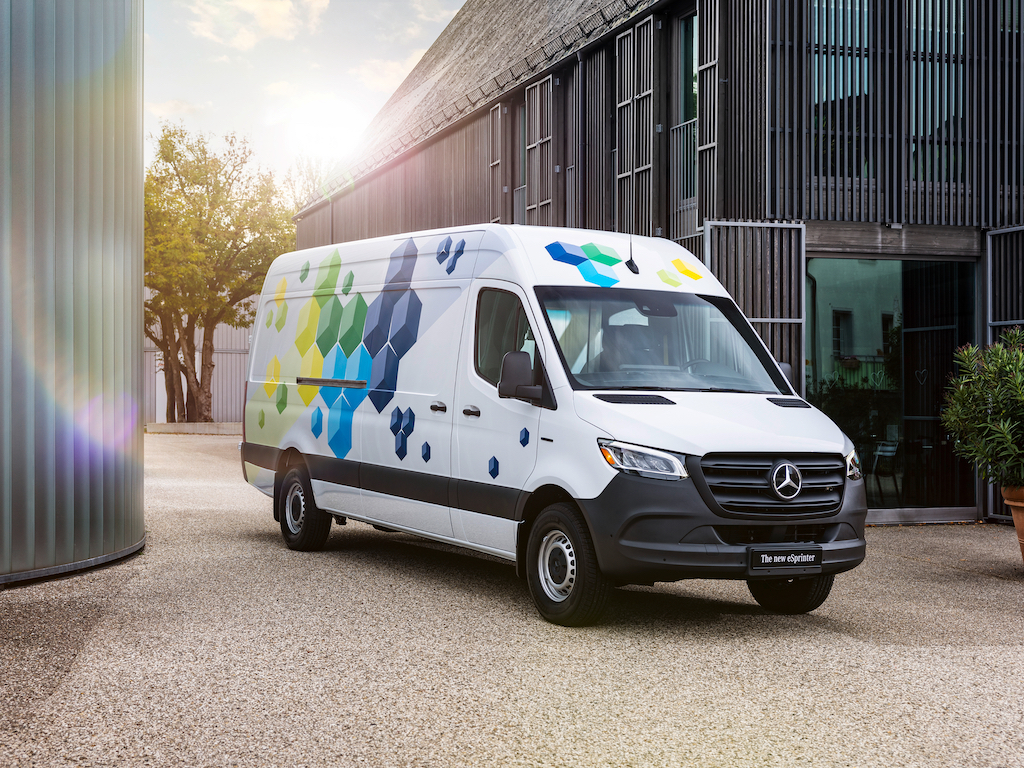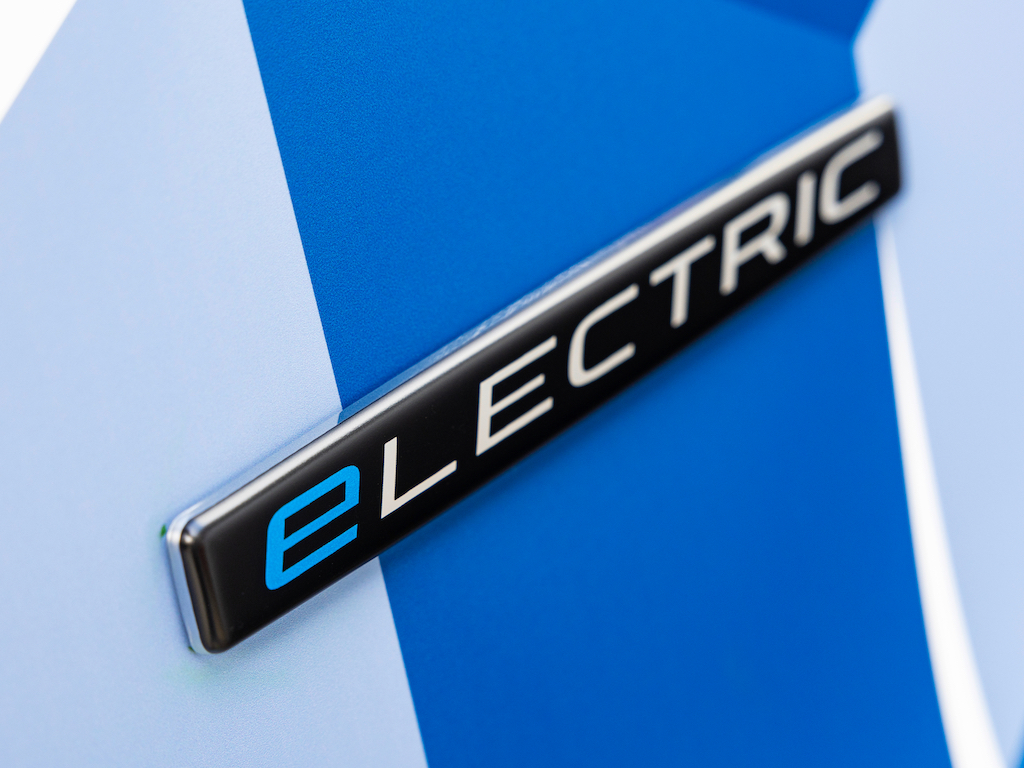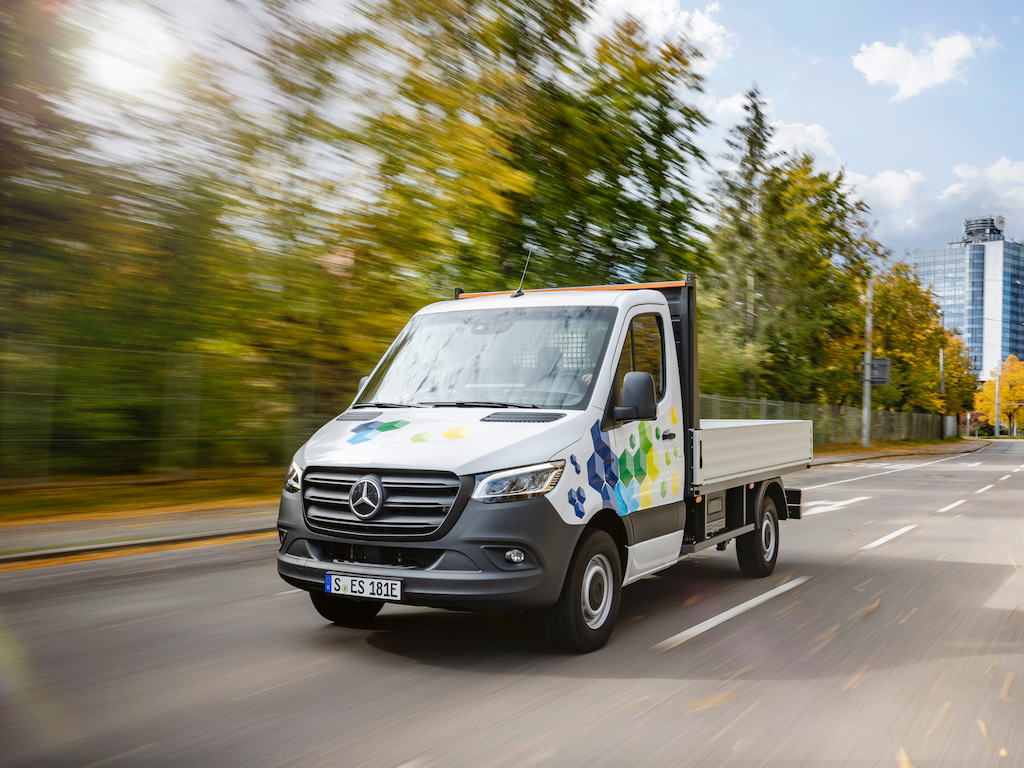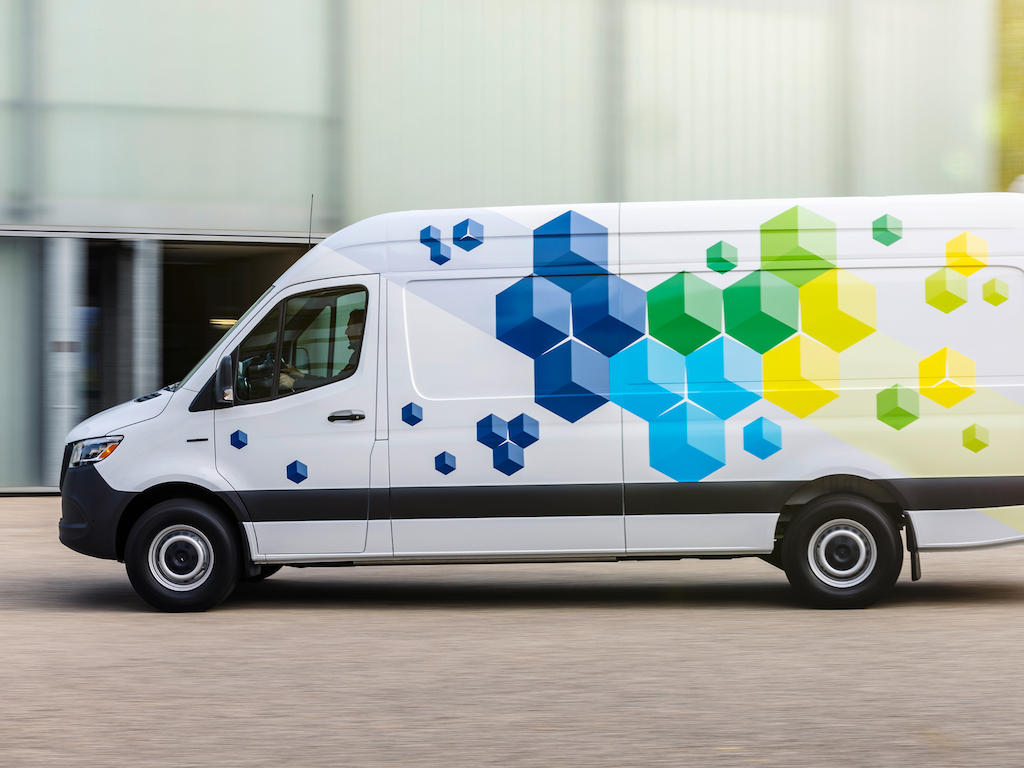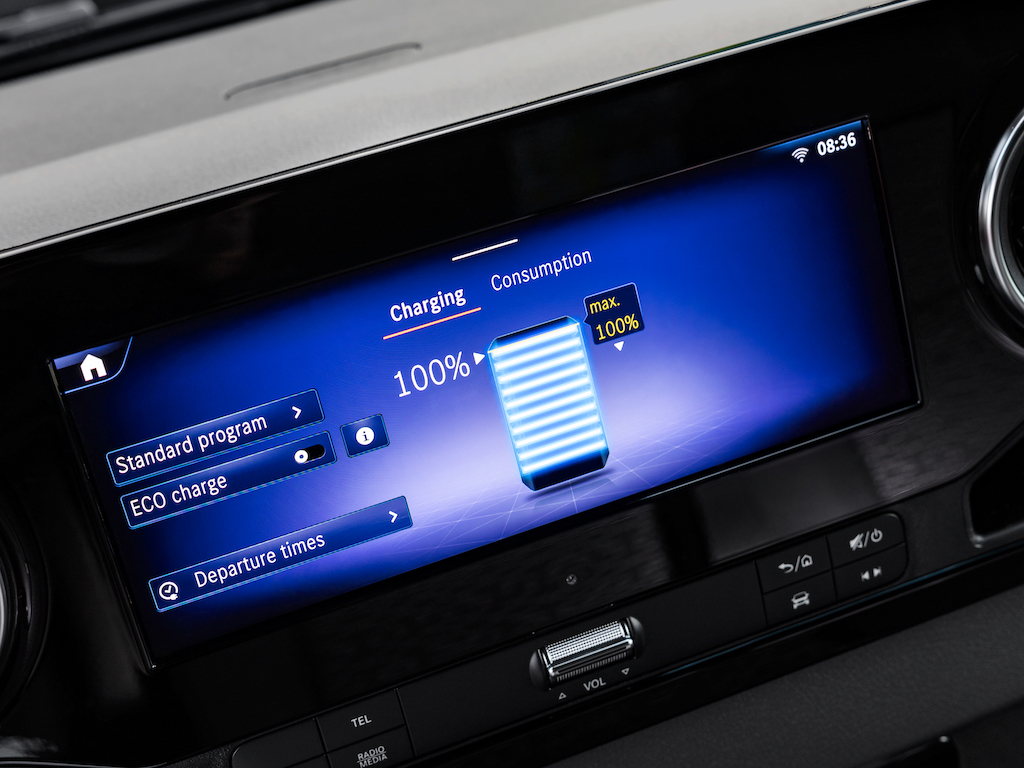A new eSprinter is coming, but not until next year – and it will be replaced by a new model in 2025. John Kendall reports.
SECTOR: Heavy van PRICE: £TBA GROSS PAYLOAD: 1,575 kg (maximum) RANGE: TBA DRIVE: 136hp or 204hp synchronous motors. Battery options: 56kWh, 81kWh or 113kWh
The next eSprinter will be available with a more comprehensive range of body types and sizes than the current generation when it arrives in the UK next year.
Details of the new van have been released by Mercedes-Benz and include two lengths of panel van as well as chassis cabs with factory-made dropside and refrigerated body options. Currently, the eSprinter is only available in one size with a 11m3 capacity, but the new model will have a load space of up to 14m3.
The 116hp motor is replaced with a choice of two new permanent magnet synchronous motors producing either 136hp or 204hp and three battery options of 56kWh, 81kWh and 113kWh will now be available, providing an upgrade to the 55kWh pack in the current eSprinter.
The enhancements are due to the new modular setup of the forthcoming van. The rear plays home to a brand-new axle containing the electric motor, while new high voltage components and control systems are in the front portion of the van. The variable size battery packs, now made of lithium iron phosphate and containing no nickel or cobalt, will be housed under the floor in the centre of the van.
Battery options range in weight from 470kg for the smallest pack up to 850kg for the largest, with the eSprinter’s gross vehicle weight now topping out at 4.25-tonnes to accommodate the heavier system, while still delivering a maximum 1,575kg payload. It’s an overhaul that enables more flexibility in the range and ensures the eSprinter can compete with rivals including the Ford E-Transit and Maxus eDeliver 9.
Much more to come
However, the comprehensive revamp is still just a stopgap ahead of the introduction of the Mercedes van.ea platform in 2025 which will form the basis of future large electric vans, as well as mid-sized vans and passenger vehicles. Despite not arriving in the UK until 2024 and even with the imminent arrival of van.ea models, Mercedes claims that the only carryover component for the driveline in the new eSprinter is the charging port in the grille.
This latest-generation van is Mercedes’ flexible solution to meeting demand for EVs while still producing ICE vans. The modular elements of the eSprinter allows Mercedes to quickly and easily ramp up or reduce production according to market needs and will, according to Marcel Minter, Mercedes-Benz Vans head of business and strategy, provide “a bridge from the current situation to van.ea”.
“It’s [new eSprinter] highly competitive to what’s in the market, but van.ea will be a different story. It gives us the current flexibility to react, we can switch from combustion engine to EV and vice versa. That’s a very good situation in terms of transition where we don’t exactly know how customers will react in the next one or two years,” Minter explains.
Although a significant upgrade to the current eSprinter, the new vehicle has been simplified and is more closely linked to the combustion engine vehicle. The introduction of the MBUX infotainment system brings the electric Sprinter into line with the diesel model, having previously made do without the system. The installation of its modular high-voltage battery and rear axle system are also more attuned to the ICE product manufacturing. This has enabled more derivatives to be produced and helps when it comes adding bodies to the new chassis cab variant.
“For the upfitters, nothing has changed above the frame, so you are able to put more or less the same fittings, storage compartments, flat beds on the electric vehicle as on the combustion van,” Minter says.
“That’s one thing that will also help them with the transition because they can switch manufacturing from one to the other. We have standardised connection points between our car and their solutions. It helps with the guys building ambulances, or for landscapers,” he adds.
One eye on zero-emission motoring
While only a handful of off-the-line derivatives will be produced at first, Minter expects more models will become available as the electric vehicle market matures. For now, the focus is on striking a balance between the current products and market needs and the future van.ea models and anticipated production of 70% zero emission vehicles by 2030.
“If you look at the new proposal for Euro 7 in Europe that’s going to be a huge challenge. There’s no choice but to ramp up EV, but we have a long-life strategy and we will still have customers that need a combustion vehicle longer, so of course we will have to look at Euro 7 carefully, but we are still sticking to our long-term strategy, but to also have like a base layer of combustion engines.”
The introduction of van.ea models would add significantly to the number of products on offer, Minter explains how simplifying the range of combustion models and pushing suitable customers towards zero-emission products will allow both powertrains to work side by side. He explains the situation by giving the example of a Formula One team, preparing for future regulation changes while still having to compete in the current championship.
“We are currently getting our complexity down because it is not possible to have the same complexity in the combustion engine range and then to get another new platform. We are getting the complexity down to be able to handle the transformation to our van.ea product, focusing on the most sold and most important portfolio positions of the combustion engine, and keeping them for as long as customers and regulations allow.”
Ultimately, the Mercedes Sprinter range will see a reduction in the choice of combustion engines and an increase in electric vehicles. The latest eSprinter is the beginning of a transition but also a push to succeed in a fast-paced game they have, until now, been behind in.
Customer experience upgrade
As well as more power, larger batteries and a greater choice of models, the next eSprinter will also get a number of new systems to enhance customers’ experience of electric mobility. A new ‘Electric Intelligence’ system will give more information on the state of the batteries, range and charging. The special EV capabilities of the new MBUX system in the eSprinter will take into account the traffic conditions and typography of your route when predicting the range. It can also calculate the best possible charging strategy in order to get you to your destination, even allowing you to arrive at your destination with a certain level of charge in the batteries. Charging settings will allow you to set a departure time to ensure the battery is up to temperature for optimum efficiency and can be customised with individual weekday settings.


